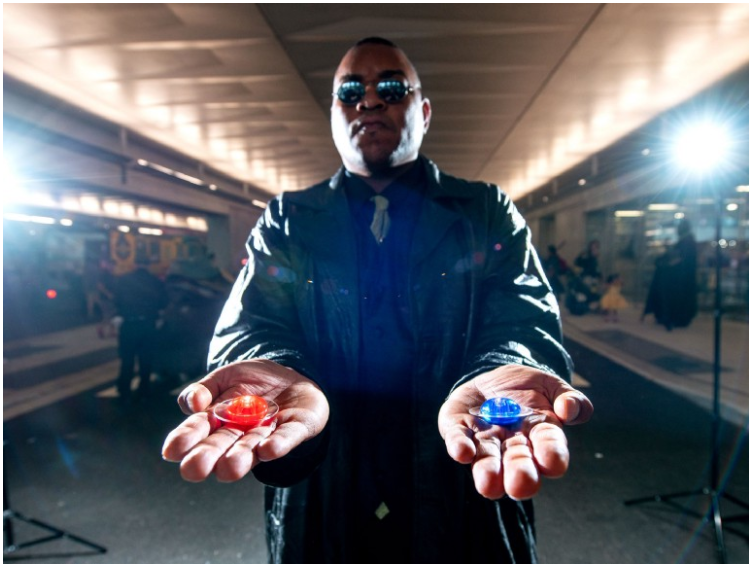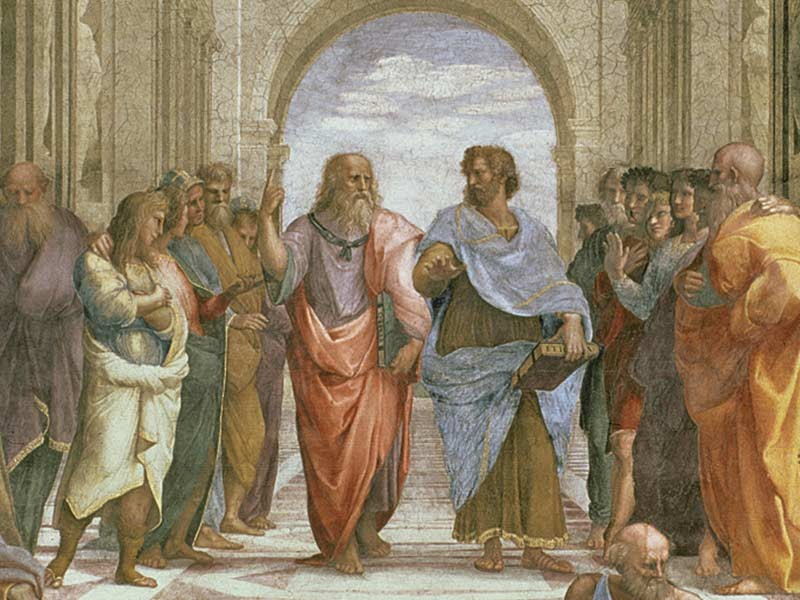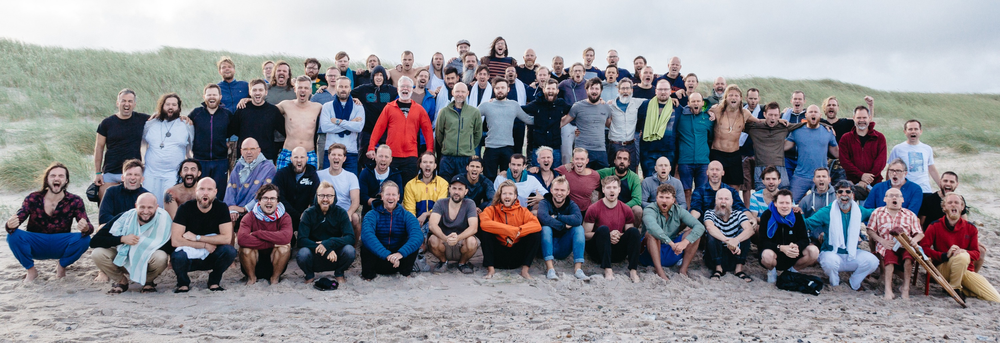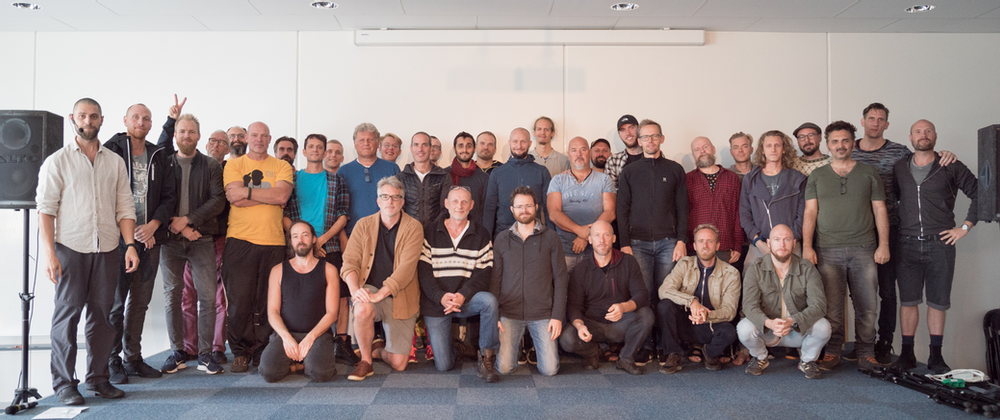Shamanism and Media in the Digital Age


(Originally published in Parallax)
THE MATRIX
In the film Matrix, Neo is given a choice. Is he going to become the ‘new man’, and take a radical risk, which means a dangerous trip down the rabbit hole? Or will he remain in the dark, narrow, comfortable, familiar, known womb called the Matrix.
Neo is, metaphorically speaking, a Shaman in training. And the first step of his training—and our adventure here as well—begins with feeling that ‘there is something wrong with the world’. This is what the buddha called, dukkha, or dissatisfaction.
If you don’t have a sense of dissatisfaction then you might as well just have a good life in the Matrix. Shamanic training is not usually recommended. However, when you get a sense of what Kurtz called ‘The horror!’ then you might start to consider a prison break.
Matrix means ‘womb of the mother’. Some people never leave this Matrix. They might appear quite happy, as long as there is no glitch. The problem is the glitch in the Matrix, the tear, the real—always arrives at some point or another.
Conversely, a real spiritual life—the journey toward being a Shaman, begins in suffering, when the real enters. However, over time it increases in joy and mastery, as the Matrix is gradually transcended. But there are many steps in between, many difficult pills to swallow.
The second stage of Neo’s Shamanistic training is to meet the muse—who is represented by Trinity in the film. The lover/muse is the best catalyst for change, and a reason to get out of bed in the morning. Trinity gives Neo a glimmer of hope of discovering what the matrix is.
In any case, after some wild adventures in the underworld, Trinity takes Neo to meet the elder Shaman named Morpheus. And the first question Morpheus asks Neo is: ‘Do really want to know what the Matrix is?’
This is a very good question. Do we really want to know the difficult truth? That’s the choice between the red pill and the blue pill. It’s Hamlet’s question as well: to be or not to be.
Morpheus also tells Neo: ‘I can’t tell you what the Matrix is, you have to experience it for yourself’. Note: Morpheus offers experiential knowledge rather than abstract knowledge. It’s like saying: you can’t know what sex is by reading the Karma Sutra, you have to experience sex for yourself.
We make a choice between the red pill and the blue pill all the time. We can eat chocolate cake or go to the gym. We can watch porn or risk real relationship. We can study, or surf the internet uselessly. We can stay awake or fall asleep.
BLUE CHURCH AND MEDIA
Jordan Hall’s article ‘Understanding the blue church’ divides the media into two camps: the blue church and the red religion — an obvious reference to the Matrix film.
The blue church is good old-fashioned broadcast, mass media. It is hierarchical and asymmetric, which means it privileges one-way communication. It speaks and you listen. It is radio, tv, and traditional education, and it is all based on the factory model.
Because of bandwidth, the blue church‘s messaging is compressed and highly controlled. It keeps its narratives simple, ordered — for the sake of population control. It does everything to make you feel secure. But it also puts you to sleep.
Broadcast media once represented a radical new way of disseminating information and organising society. Today it is all about security, conservatism, the ‘build a wall’ mentality. It says that if something is working well, don’t fuck with it. And that’s true.
We don’t want to be naïve leftist revolutionaries here. Moreover, the left can be as ‘blue church’ as the right with its policing behaviours. As Morpheus says, ‘the Matrix is control’, and the blue church is control.
THE RED RELIGION
The blue church was built for the 20th Century, but today we are experiencing a paradigm shift called the internet and soon the rise of so-called intelligent machines.
The internet is our modern God, or modern Matrix. It’s omnipresent and omnipotent and we appear to be trapped inside it. It could become another blue church or system of control, but it is still young and dynamic enough to have the potential for creative revolutionary activity. It’s still got some red around the edges, red which is the colour of passion and fire.
The red religion is the new media. It consists of long-form YouTube conversations, podcasts, blogging. Its promise is to make people more democratic and open hearted; to create a self-organised utopia, without all the protocols of the blue church. Its message is hope and freedom and utopia.
However, we have seen, with the rise of populism, mass surveillance, Brexit, Donald Trump, and of all these unpredictable so-called ‘Black Swan’ events — that this is a rather naïve promise.
The problem is that the red religion is also chaotic and fragmented. It is like the tower of Babel: everybody is talking, but who should we listen to? People are becoming more and more hostile and tribal, and the unity that the blue church once provided, a certain amount of security, has been broken.
In other words, there is mass incoherence. And it’s very hard to know today what is true and what is bullshit. On the other hand, maybe our collective lies are becoming more transparent. Maybe we are less fooled by cheap marketing messages. And of course there are certain amazing possibilities arising simultaneously with the great dangers that the red religion puts forth.
Neo learns that he can hack matrix, or in other words the blue church. And you can be Neo too, and dive deep into the rabbit hole of new media. You can make podcasts, you can write blogs, you can put up Youtube videos. You can talk back to the Matrix—unlike your television set.
The red religion is a dangerous revolutionary space. It is full of the same fragmented garbage as before and much worse, but there is more bandwidth again. It is an intensification and magnification of all the horrors and possibilities and trash that exist in the collective consciousness.
The good thing about the red religion is that you can find the diamonds in the trash heap. You can find John Vervaeke or Jordan Hall or Alexander Bard. You can do your own stuff without any sanctimonious blue church authority telling you what to do. You can be raw, authentic—you can be rock and roll. You are the baby that has just come out of the matrix.
THE SHAMANISTIC CASTE
Alexander Bard tells me that about 4 to 5 percent of the population can be described as ‘the shamanic caste’. Shamanoid types are those who are characterized by a certain amount of openness, creativity, radical intelligence, and bravery. They can be artists or entrepreneurs, diplomats or priests, engineers or philosophers. They are those who are drawn to novelty and adventure —who think outside the box.
However, the Shamanoid types can be dangerous, or just ineffectual, without training and knowledge—not everybody is ready for the red pill. The point is, if we want to discover our Shamanic nature, we have to go through shamanic training.
Many would-be Shamans have died in the wilderness. Think of Arthur Rimbaud, or Vincent Van Gogh, or Friedrich Nietzsche—men with Shamanistic qualities who had no real teacher or lineage. So how do we find our Shaman teacher then? Where is Morpheus?
Start with longing, a real Shaman once told me. This longing will attract the muse who will take us to Morpheus. And then the apprentice work will really begin.
DEPRESSION
When Neo first discovers the truth of the Matrix—that he has been living in a dream world—he becomes wildly depressed. He experiences all the classical symptoms of mourning — denial, sadness, and anger. He wants to go back the world of illusion, he doesn’t believe in his new reality — he says ‘this can’t be happening to me’.
Neo’s experience of breaking through the Matrix is like when you discover that your wife has been sleeping with your best friend for 25 years. Your matrix is shattered. You experience ‘the desert of the real’. The world starts to look pretty dark and broken, like a wasteland. You want to sit on your couch for weeks and drink vodka and smoke joints and play video games. You contemplate suicide. You will do anything to avoid the ‘desert of the real’.
But eventually you might decide to ‘clean your room’ as Jordan Peterson suggests. You evaluate the situation — you begin see the wisdom in your suffering. You realize were naive before, back when you thought you were happy. But now you can use the pain. Now you can decide to become a dangerous motherfucker. You can do a lot of martial arts training like Neo. Only when Neo has become really badass and educated can he begin to take on the evil robot overlords.
But taking the red pill might not be so dramatic. In fact, the red pill might look like a blue pill. In other words, it might be more radical for you to work with your current matrix or program, to stay with your family, to honor your tradition, to listen to your elders, not to do anything stupid like leaving your wife and running off to India to be a crazy yogi or whatever.
Maybe getting your act together and trying to work out your marriage is your red pill. So, it’s complicated. It’s not the radical either/or situation which the film makes it out to be. But if you are a Shaman-in-training you will need to break the matrix sometimes, to take the red pill.
OPPORTUNITIES IN HELL
When I started writing seriously, I was a bit like Neo at the beginning of the first Matrix film. I was depressed and bankrupt, I was an editor in a rather drab office, with a somewhat tyrannical manager, and I loathed my job. Actually, I was the only guy in an open space office full of woman, if you can imagine that. The big boss from upstairs would pass by and wave and say, ‘hey ladies’. My friends in the company were social justice warrior ladies. I banded together with the most rebellious members of the team. We really hated the system, for good reason.
But actually, in retrospect, it was a great opportunity. I had a quota of work that I usually finished in a couple of hours. This left me the rest of the day to hack into the Matrix while I pretended to do my work. I thought about the film director Werner Herzog, who stole his first cameras to make his early films. Hacking the system, I told myself, was in the service of art and beauty.
So this was my training schedule. I would wake up at 6AM, meditate for about an hour, then take the train from Versailles Rive Gauche—a western suburb of Paris—down the left bank of Paris, to the other side of the city. This mean about 45 minutes of writing time on the train. And when I had finished my quota, I would edit, edit and edit some more.
The writing helped me hate my lousy job a bit less. Time and space dissolved in those blissful 45 minutes of writing. I began to discover a writing voice. And I had all the time in the world to edit the raw words which the muse had dictated to me on the train. The end result was a book of poetry. Poetry and song have always been my way out of the Matrix. What’s yours?
THE BEAR SHAMAN
If you are an academic type perhaps you are wondering: what does this have to do with real Shamanism, with the Bear Shaman of Siberia for instance.
The bear shaman leaves the tribe, goes out into the wilderness; he studies the bear to the point of possession. He dresses in bear skins; he does a kind of a bear dance; he seduces and dazzles the bear. Eventually, he becomes one with the spirit of the bear, and lets himself be eaten. Then after he has been fully consumed and digested, the bear shits him out. When he returns to his community he is very powerful but also very down to earth and very practical. He can now teach the hunter to track the bear.
This is analogous to what the modern would-be shaman has to do. We have to become possessed with something terrible and beautiful. We have to go and confront that. We have to find the bear.
Through a lifetime of training, we can become vulnerable and effective, mystical and pragmatic, like a Shaman. This means losing our fear, offending the superego of the civilized world—it means at first getting a little crazy. It means entering a state of spiritual possession.
Sometimes our behavior might seem a little weird to the rest of humanity; at worst, the blue church might try to crucify us. But we still will have to go back again and get eaten by the bear. This means to risk losing friends, reputation, and changing paths—and never being satisfied with the way things are. The Shaman learns to be very dangerous, very powerful, but very flexible too.
If I appear to be selling something here, I should make this caveat. In marketing you over-promise, but here, in the spirit of the Shaman I want to under-promise—the Shaman’s message is an anti-marketing message. It offers no techniques, gimmicks, or personal development techniques. It tells you that you will probably lose a lot of money and go through hell if you sign up for this program.
The only advice to give is: make friends, follow the muse, find Morpheus. And go and meet those muses offline; don’t be a keyboard warrior, stuck in echo chambers. Make sure your friends challenge your ego and tell you the truth. The Shaman has to be very very honest to him or herself.
Finally, be an amateur, in the positive etymological sense, which means you do something for love. (Wikipedia says: Amateaur is borrowed from French amateur, from Latin amātōr (“lover”), from amāre (“to love”).
So, I lied here a little. I am making a marketing promise. The promise is: if you follow this advice you will get eaten by the bear.
THE MADMAN IN THE FOREST
It’s hard to find a real Shaman. The difficulty is: most of those who will call themselves Shamans are fake. It’s probably good to avoid anybody who uses the label Shaman, or is a member of the whole California Guru scene.
Personally, the one or two people I have met who I consider to have great Shamanistic qualities, wouldn’t describe themselves as such. Remember, I’m describing an archetype here, not advocating the retro-romantic worship of so-called primitive culture—which was far less primitive than we imagine, by the way. In any case, I hope the real Siberian Shaman will forgive me for this ‘cultural appropriation’.
It’s been my experience that real Shaman appears in humble guise; you wouldn’t even notice him or her on the street. Moreover, if you are lucky enough to train with such a person, it’s a lot of work. To study with a Shaman you have to earnestly meditate and study a lot, to train attention and body, to become highly disciplined—before they give you some magic plant medicine, that is.
Furthermore, in the modern world we need to train the mind and and body to become strong enough not to get destroyed by the information tsunami. We also need to get fluent in philosophy, mysticism, and poetry. The Shaman’s project is fundamentally educative in that sense.
The best Shamanistic technique I know is mediation. Meditation is hygiene in an age of information overload. When you meditate you go down the rabbit hole of your body/mind and find various gaps in the matrix.
When human beings started working in offices, we had to invent jogging and gyms in order to prevent ourselves from getting fat and ugly. With the internet, if we don’t want have an ugly, fragmented mind, we have to do some form of meditation. This will help us be less superficial, fragmented, and ideologically possessed.
Meditation is a bullshit detector. It links your mind to your body, and the body never lies. Through meditation, you learn to know your body in the way a woman knows her body (usually better than a man, if that’s not a controversial statement).
Today one of the pathologies of the modern world is an inability to listen to the body. It’s so easy to get lost in a purely mental realm, to lose our time in virtual reality. So we have to train our body and our mind before we can even dream of meeting Morpheus.
To conclude, get used to the desert of the real. Eventually, little blue flowers and mushrooms start to pop up everywhere and life gets re-enchanted. Then follow the windy path into the forest to meet the madman, who is actually the only sane person in a world that has gone completely nuts.
LINKS:
European Men’s Gathering
Podcasts:
Sweeny vs Bard
Sweeny Verses
Support or contact Andrew Sweeny:
Patreon
Twitter
Facebook
YouTube
Music and Poetry





Responses